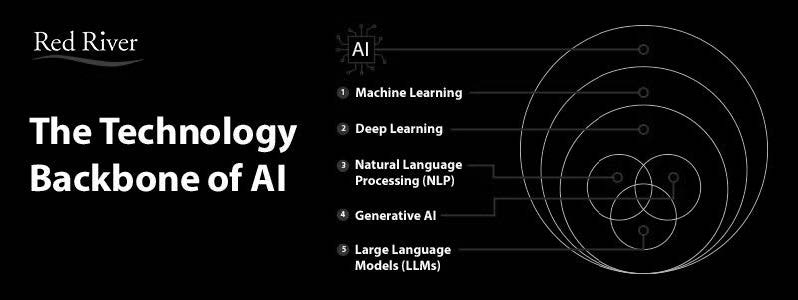The information contained in this article is not intended as legal advice and may no longer be accurate due to changes in the law. Consult NHMA's legal services or your municipal attorney.
The world of Artificial Intelligence (AI) is hard to escape at this stage in our technology evolution. Like when the internet was in its infancy and experiencing rapid expansion, AI, its applications and its reach are becoming both commonplace and complex. This rapidly evolving landscape is fueled by advancements in AI and advanced analytics. To be a part of that conversation and decide how best to limit or leverage this movement, it’s essential to understand what it is, how it’s being used in the modern workplace and the industry’s complicated love/hate relationship with AI. With this information, local government leaders can determine the appropriate use cases for AI that align with organizational goals and carefully weigh the risks and rewards.
The Technology Backbone of AI
Artificial Intelligence is a technology discipline. The purpose of AI is to allow machines to act similarly to human cognitive intelligence. This includes visual perception, speech recognition, decision making and language understanding.
AI is made up of several subfields including Machine Learning, Deep Learning, Natural language Processing and Generative AI. Each of these subfields can be used independently or in combination to add value to the system.

- Machine Learning is a subset of artificial intelligence that involves developing algorithms and statistical models which enable computer systems to learn and program themselves from experiences without being explicitly programmed.
- Deep Learning is the subfield of machine learning, supporting algorithms that are inspired by the structure and function of the human brain, and named artificial neural networks. Deep learning models can learn complex patterns from data, which makes them well-suited for a wide range of tasks, such as image recognition, natural language processing, and machine translation. Deep Learning is comprised of discriminative AI and generative AI. Where discriminative is used to predict or classify based on learning a data set, generative AI is used to create new content based on learnings for existing content.
- Natural Language Processing (NLP) is the field of artificial intelligence where computer science meets linguistics to allow computers to understand and process human language. NLP systems can perform a variety of tasks, such as machine translation, text summarization, and sentiment analysis. NLP is often used in conjunction with machine learning to develop more sophisticated AI systems.
- Generative AI is a type of AI that can create new and original content, such as images, videos, or text. This is achieved using deep neural networks that can learn from large datasets and generate new content that is like the data it has learned from.
- A Large Language Model (LLM) is a deep learning algorithm that can perform a variety of NLP tasks. Large language models use transformer models and are trained using massive datasets.
Current State & the Expansion of Generative AI
In its simplest form, AI is the next step evolution of decision-support systems that are pre-defined or algorithmic. Both AI and machine learning try to solve specific problems by analyzing historical data and outcomes to predict or suggest a likely action. Before November 2022 and the introduction of ChatGPT, AI was typically embedded in complex systems and used to enable the system to automate a process or predict a response.
Classic AI is typically used in systems to provide four key functions:
- Describe what has happened
- Diagnose why it happened
- Predict what will happen next
- Provide prescriptive optimization decisions based on learned experiences
Most people interact with AI through a specific device or system to address a specific task such as bank fraud detection systems, IT operations, the Netflix video selection screen or Amazon Alexa. Since ChatGPT was introduced (and follow-on Generative AI tools), the power of deep learning systems is now accessible by anyone with access to the internet by simply using human language to interact with the system. Deep learning systems use artificial neural networks to learn complex patterns from massive amounts of data, which allows them to be used for a wide range of tasks such as image recognition and natural language processing.